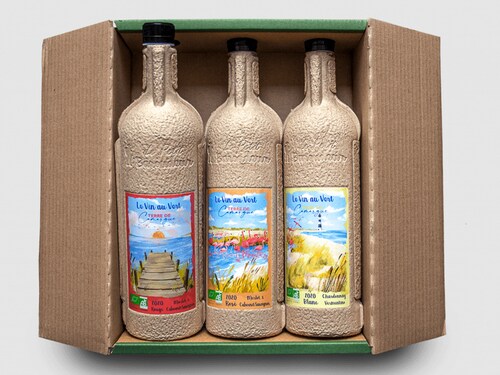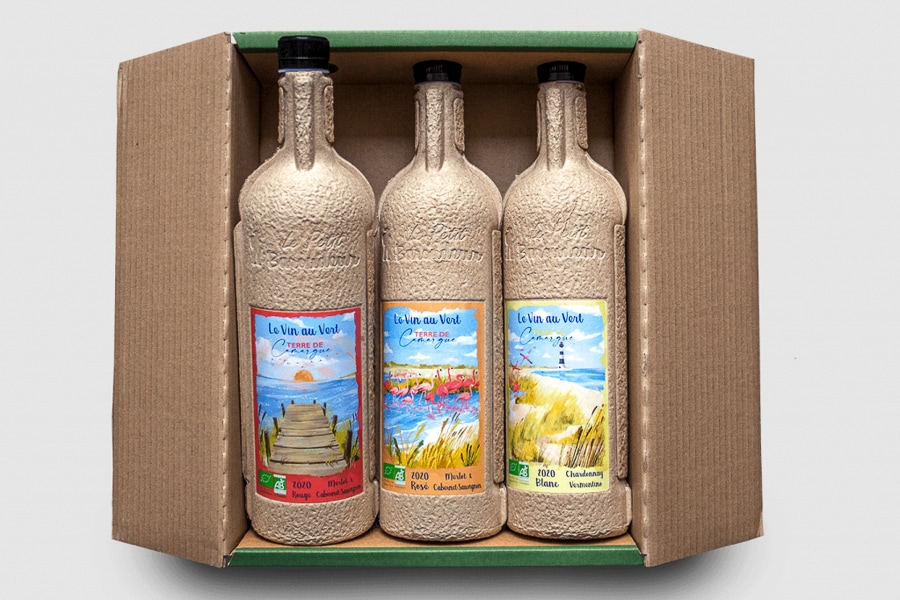Is this the wine bottle of the future?
French startup Le Petit Baroudeur has invented a recyclable wine bottle that keeps wine fresh longer


 Startup Le Petit Baroudeur has invented a recyclable wine bottle that keeps wine fresh longer.
Startup Le Petit Baroudeur has invented a recyclable wine bottle that keeps wine fresh longer.
Image: Courtesy of Le Petit Baroudeur
This is not a traditional wine bottle. Nor is it a bag-in-box. It"s inventors refer to it as a "bio-teille" (a play on the French words for organic and for bottle) to emphasize that it"s a wine container made of molded fiber into which a flexible bag compatible with recycling channels is inserted. Two young French entrepreneurs have invented what could end up being the wine bottle of the future: more environmentally friendly, less heavy to carry and above all, keeping wine fresh for longer.
Are you aware that the bottle of your favorite wine is responsible for a certain quantity of CO2 emissions? While the material used in traditional wine bottles may have the repuation of being among the most eco-friendly thanks to its almost infinite power of reuse, it should be remembered that in order to be melted, glass needs to reach a temperature of up to 1,000°C. Consider the amount of energy required to reach this level of heat! Glass is also a very heavy yet delicate material, which can pose challenges when it comes to transport, inevitably leading to additional labor and transportation costs. The greenhouse gas emissions for a glass bottle are around three to five times higher than for a brick or plastic bottle. This is one of the key findings of the study conducted by Victor Roux and Marin Belorgey before they launch their "Bio"teille."
At the head of a start-up called Le Petit Baroudeur, the two young entrepreneurs have come up with an alternative for packaging wine. Seeking a more environmentally friendly wine bottle, but also one that is more convenient to transport, the two former business school students have developed a container whose production generates just 114g of CO2 compared to the 502g generated by the production of a glass wine bottle.
How did they do it? By using molded fiber. A pulp is obtained by mixing water with fiber recycled from old cardboard and newspapers. It is molded, pressed then dried in 180°C. That creates the shell of the Bio"teille. The concept for the inside is based on the idea of the famous bag in box wine containers, although with the difference that here the insert is produced in a single layer with polyethylene. A detail that is more than just a detail since this allows the bag to be recycled. The cap is also made of this material. As a result, the bottle is eight times lighter and keeps the wine inside fresh 30% longer.
On its website, Le Petit Baroudeur Le Petit Baroudeur allows consumers to dsicover its innovation themselves with a selection of three Camargue wines—one white, one red, one rosé—offered for pre-order at 29.95 euros. Deliveries are scheduled for next February.
First Published: Nov 19, 2021, 16:00
Subscribe Now